Determination of the speed of sound using a resonance tube
Content of this page :
1. Introduction of the experiment.
2. Aim of the experiment.
3. Tools of the experiment.
4. Steps and methods of the experiment.
5. Parameter, Theory and Final law of the experiment.
6. Table of The Readings.
7. Medical application and advantages of the experiment.
1. Introduction of the experiment:
The speed of sound is one of the most important measures that have been recognized by physicist and throat it many things that we’re not now before where measured. The phenomenon of the reasons that occurs during the experiment is interference of two waves of the same frequency speed and phase, resulting in constructive interference that has the violation highest energy and the highest amplitude. The pressure disturbance that travel from one particle to another indicates to the velocity of sound. Basically, a sound wave is a travelling disturbance. Wave pulse indicates to a single disturbance while wave train is the series of disturbances. Wave frequency measures the number of pulse have been made in a length of given time. In the simplest sense, frequency is the number of vibrations per seconds. It is usually measured in Hertz(Hz). On the other hand, resonance is the natural vibration frequency of an object. In the experiment, three activities have been done in order to exemplify the different properties of sound.
2. Aim of the experiment:
-Measurement of the speed of sound from the stationary longitudinal (sound) waves set up in a closed air column of variable length (the closed resonance tube).

3-Tools of The experiment
· Closed resonance tube of variable length about 1 m long and 3-4 cm in diameter.
· Meter scale.
· audio-frequency signal generator and loudspeaker or set of tuning forks of frequencies 512-256 Hz.
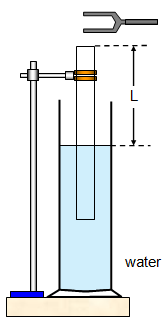
4. Steps and methods of the experiment:
Using two positions of resonance for each frequency
Begin the experiment with the length of the air column in the resonance tube only a few cm in length. Select a frequency of 500 Hz, adjust the volume control to a low but audible value and clamp the loudspeaker a few cm above the mouth of the tube. (Alternatively, select the fork of highest frequency, strike it smartly on a rubber pad and hold it over the mouth of the tube.)
Adjust the length of the resonance column until the tube responds to the imposed vibrations, i.e. until resonance occurs. By further small adjustments obtain the position of maximum loudness as exactly as you can. Measure the length of the air in the tube, repeat the measurement two or three times and take the mean, Now find a second and different position of resonance using the same frequency (or fork), but with about three times the length of air and again take the mean 12 of several readings of the length when resonance Occurs.
Obtain different values of 1, and 1, using other frequencies (or forks).
5-Parameters, Theory And Final Law of The experiment
Parameters:
C: speed of sound in (m/s)
𝑓: frequency in (Hz)
L1: first height of water in the tube in (m)
L2: second height of water in the tube in (m)
𝜀. : end correction in (m)
Theory:
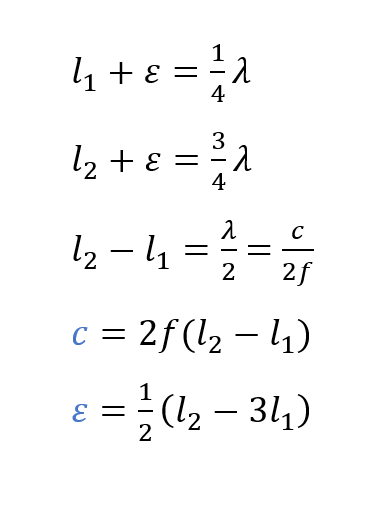
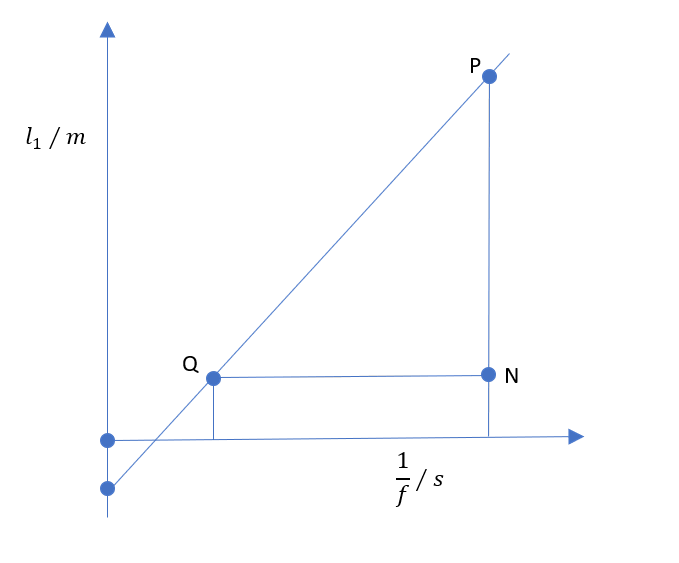
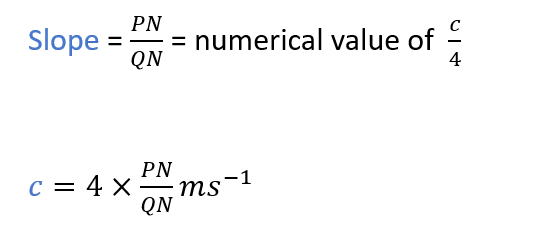
Final Law:
Speed of sound:
End correction:


6. Table of the Readings:
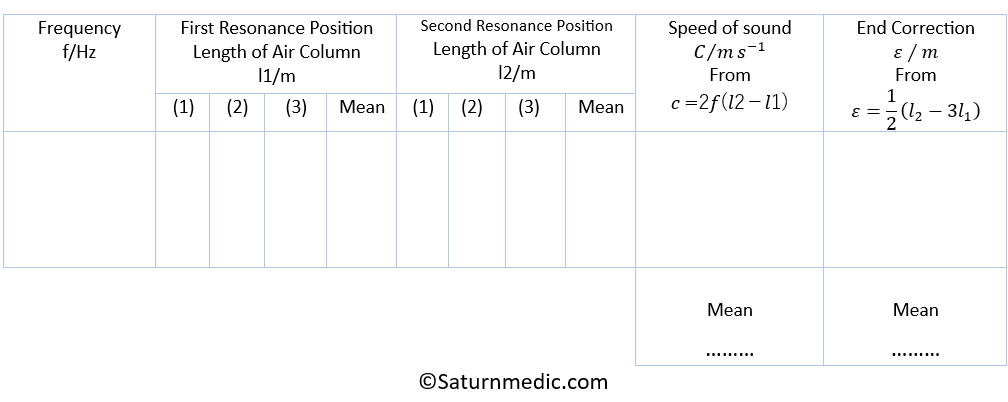
7 -Medical Application:
1. The intensity of ultrasound used for medical diagnostic is kept low to avoid tissue damage. Intensities of about 10-2W/m2 are used and seem to cause no ill effects
2. Ultrasound of considerably higher intensity is used for therapeutic purposes. Ultrasound diathermy is deep heating using ultrasound of intensities 1-10W/m2 .
3. Ultrasonic sound waves sent into the body are Doppler shifted by any motion in the objects that reflect them. It is possible, for example, to measure blood velocity by observing the Doppler shift of ultrasound reflected from the blood cells. More commonly, the Doppler shift of ultrasound is used to monitor the fatal heart motion.
4. The ultrasound used for sterilization because it kills the virus and bacteria.
5. It is also used as massage tool for muscles: cure the cancer, destruction the kidney stone.
6. Many devices use ultra-sonic sound, like toothbrushes.
7. Sonic denture cleaner or sonic cleaning device eliminates limescale deposits.
8. Ultra Max Cube: multiple of uses such as cleaning brushes, dentures, burs, diamonds, etc.
